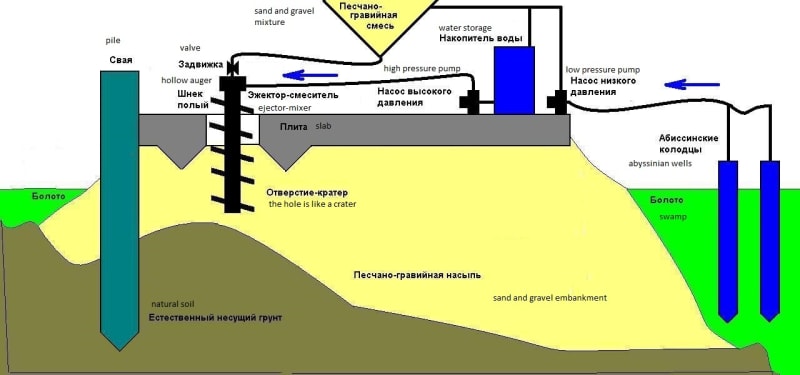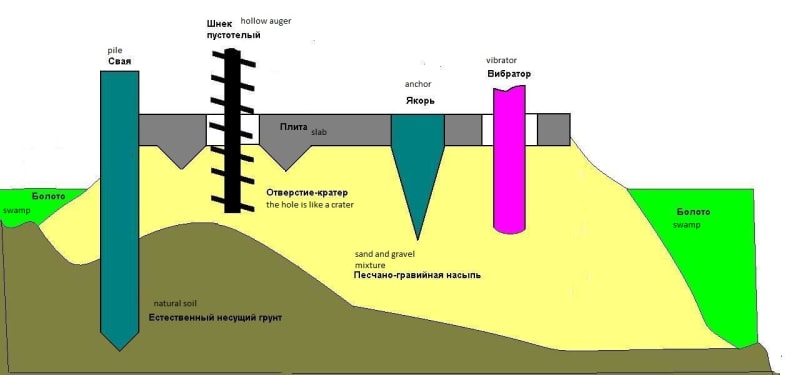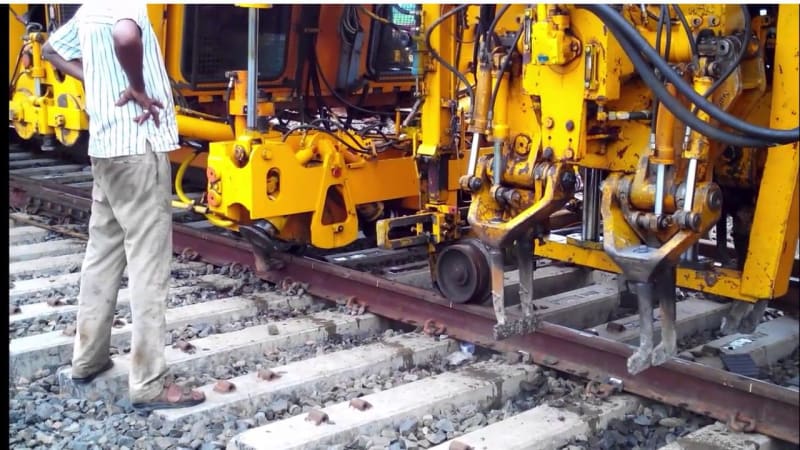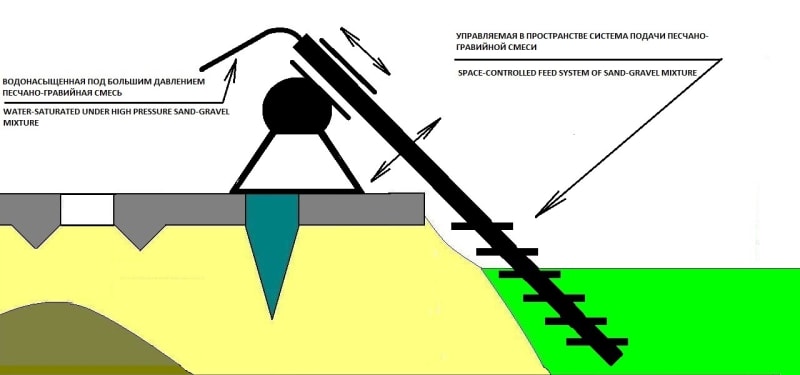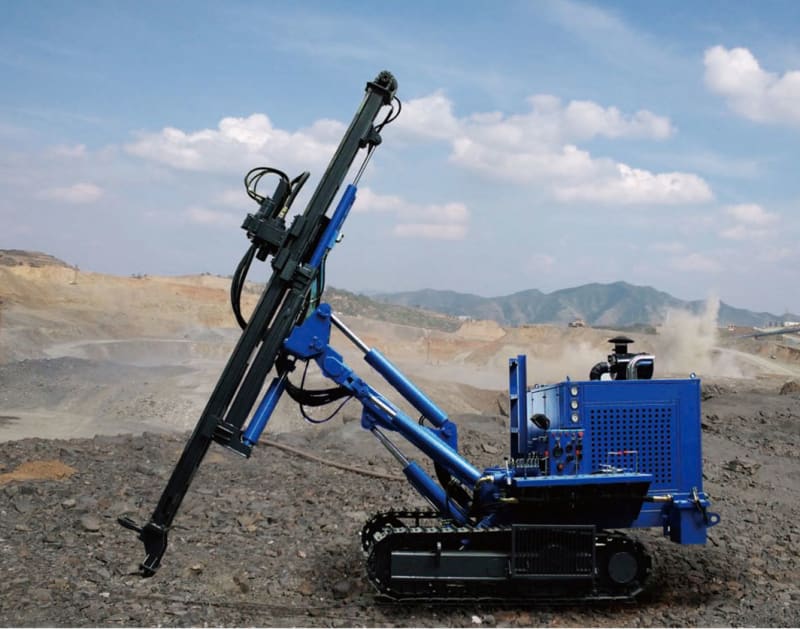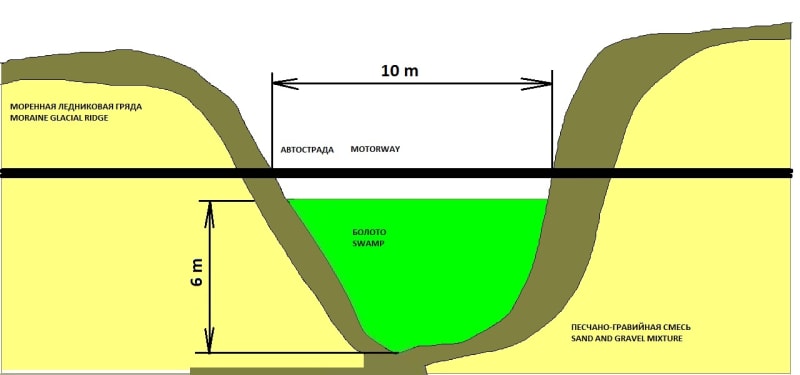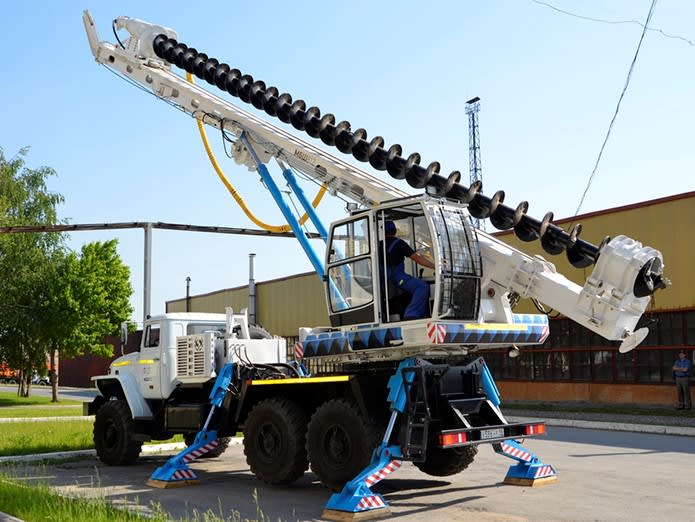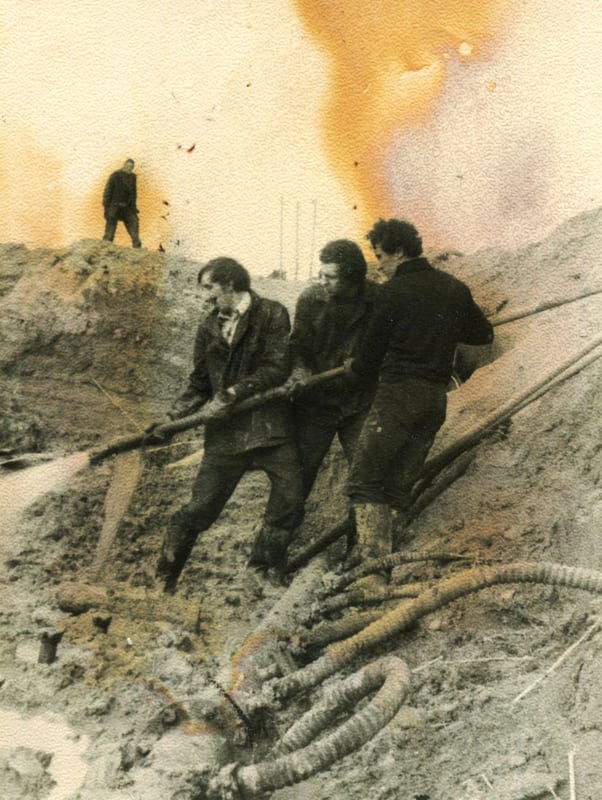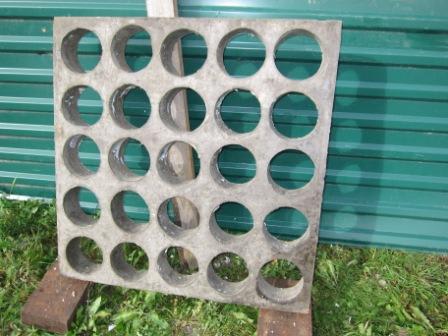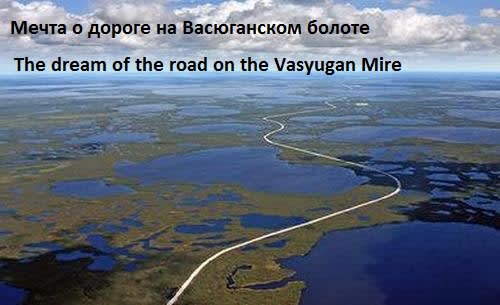My humble obeisances. You got me thinking.
In the North of the Moscow region there is an abundance of glacial moraine ridges, in the lowlands of which there are swamps as in the picture.
Let's compare the discussed method of construction of a 3-meter-wide road in a swamp with two known ones: the construction of bored piles and the classical one.
Which method is the most
high productivity?
1. We will make changes to the Soviet drilling rig SBSH-812. I assume:
- the augers will be hollow, the diameter is 800 mm, the diameter of the auger pipe is increased, the size of the ribs is reduced,
- the mast will be able to work at angles of 45,..., 90 degrees,
- the water-saturated sand-gravel mixture is fed to the auger at a speed of 1 cubic meter per minute under a pressure of up to 50,..., 200 meters of water column.
Then the injection time of the embankment with slopes on the site of the swamp will be equal to 180 minutes. The work will be done in
1,.... 2 working shifts taking into account the time of moving the equipment and its maintenance. Then I can lay perforated slabs. My calculations may not be accurate, but they do not contradict the laws of nature.
2. The second method is the construction of eight bored piles in two rows as supports of a single-span bridge (without overlapping and grillages). The diameter of the piles is 400 mm, the length is 12 m.
The time for concrete to harden is
several days. The laws of nature do not allow you to do the job faster.
3. Classic. Water is removed by wellpoints (my experience in the USSR is in the picture), peat is removed mechanically, an embankment of sand-gravel mixture from the nearest ridge is built mechanically. Pumping water will take
several days with pumps of any capacity. The laws of nature will not allow otherwise.
Qualitative assessment.
1. The mound is stronger, more reliable than piles, because distributed systems are more stable than concentrated ones.
2. The discussed method can be well automated (robotic). Manual labor is small, the technology is monotonous, measuring the loads on the auger and water pump will allow you to study the soil of the swamp.
3. The mound is compacted with water, not a vibrating roller.
4. The volume (diameter) of the injection of sand-gravel mixture may be larger than the diameter of the screw (injector) due to the weakness of the substituted water-saturated soil
For clarifications it is necessary to try to ensure
high productivity.
На севере Московского региона обилие ледниковых моренных гряд, в низинах которых бывают болота как на картинке.
Сравним обсуждаемый способ строительства дороги шириной 3 метра на болоте с двумя известными: строительство буроинъекционных свай и классическое выторфовывание. Какой способ самый
высоко производительный?
1. Внесем изменения в Советский буровой станок МБШ-812. Допустим:
- шнеки будут пустотелые диаметром 800 мм с увеличенным диаметром трубы и уменьшенным размер реборт,
- мачта сможет работать под углами 45,…, 90 градусов,
- подача водонасыщенной песчано-гравийной смеси в шнек со скоростью 1 кубометр в минуту под давлением до 50,…, 200 метров водяного столба.
Тогда время инъектирования насыпи с откосами на месте болота будет равно 180 минут:
(10 метров)*(6\2 метров средняя глубина болота)*(3*2 метра ширина насыпи с откосами)\ (1 кубометр в минуту)=180 минут.
С учетом времени перемещения оборудования и его обслуживания –
1,…, 2 рабочих смен, после которых можно настилать перфорированные плиты. Возможно, мои расчеты не точны, но они не противоречат законам природы.
2. Устройство восьми свай в два ряда в качестве опор однопролетного моста. Без перекрытия и ростверков. Диаметр свай 400мм, длина 12м.
Время для затвердевания бетона
несколько суток. Законы природы не позволяют сделать работу быстрее.
3. Классический. Обезвоживание иглофильтрами (см. картинку из СССР с моим опытом), механическое удаление торфа, заполнение песчано-гравийной смесью из ближайшей гряды с выравниванием и уплотнением самосвалом, бульдозером, виброкатком. Без твердых одежд. Одна лишь откачка воды займет
несколько суток насосами любой производительности. Законы природы иное не позволят.
Качественные оценки.
1. Насыпь долговечней, надежней свай, потому что распределенные системы устойчивей сосредоточенных. Пример, telegram против ФСБ.
2. Обсуждаемый способ хорошо автоматизируется (роботизируется). Мало ручного труда, технология однообразна, измерение нагрузок на шнек и водяной насос позволяют изучать грунт болота.
3. Насыпь уплотняется водой, а не виброкатком.
4. Объем (диаметр) инъекции песчано-гравийной смеси может быть больше диаметра шнека (инъектора) из-за слабости замещаемого водонасыщенного грунта
Для уточнений надо пробовать ради
высокой производительности труда.
Используется три единицы техники: буровая, шасси с насосным оборудованием и бункером для ПГС, погрузчик.
Любопытны мнения русскоязычных, умеющих ставить и решать новые технические задачи.
Спасибо за внимание.
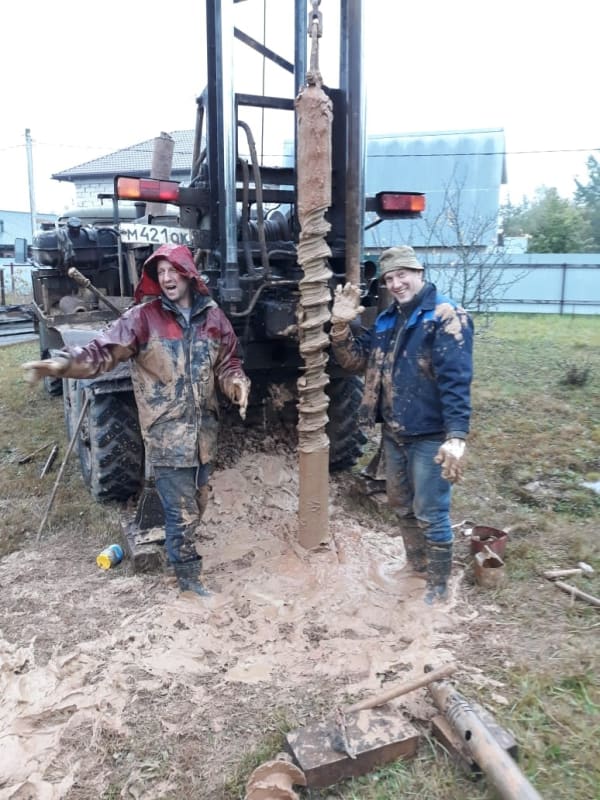
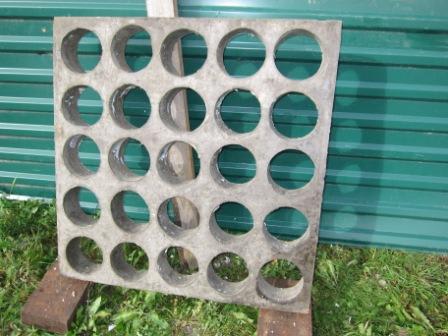
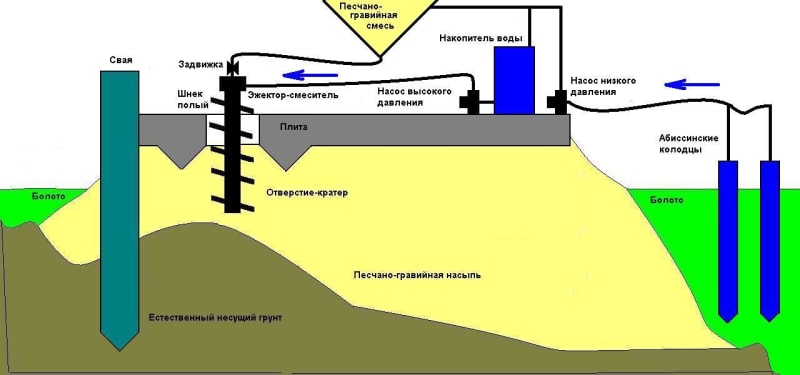
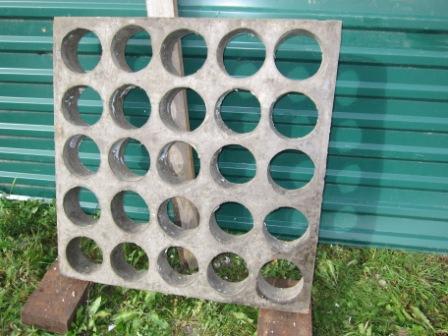 Alexander Morozov, Moscow region +7 903 979 5133
Alexander Morozov, Moscow region +7 903 979 5133




